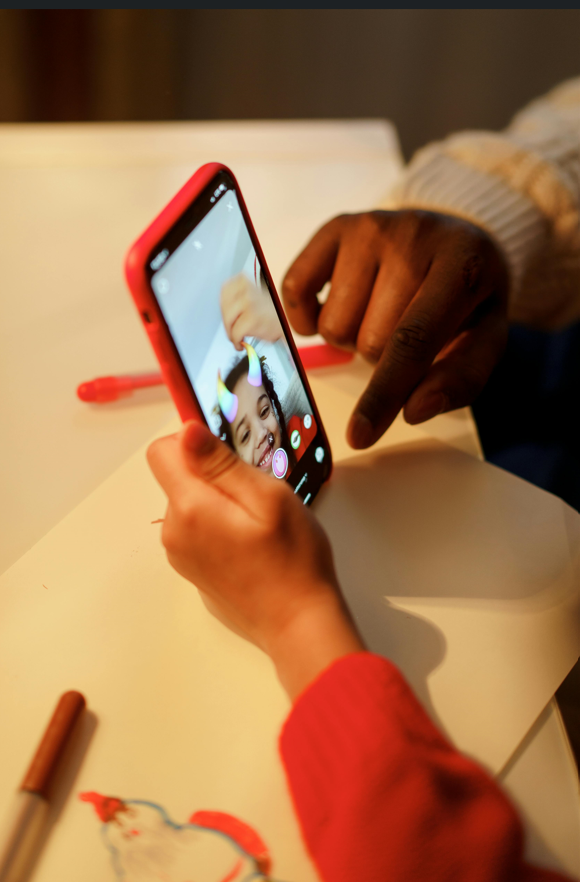How do smartphones shape belonging in a digitalized childhood?
by Øyvind Næss
In Norway, when something is said to have an ‘affective value’ (affeksjonsverdi), it is meant to convey how a thing can have a value that is disconnected from its economic or practical value within a system of exchange. Therefore, ‘affective value’ is a subjective value that always exists in a relation to a specific individual. The term is typically used for objects with an emotional significance or meaning attached to them. For example, you might have an old broken watch that you cannot get yourself to throw away. That probably means it has ‘affective value’. Throwing it away will come with an emotional cost.

Not sure how to translate affeksjonsverdi into English, I asked my university’s AI chatbot for a translation and it proposed translating it into sentimental value. But connecting the term to sentimentality creates a binary between a subjective sentimental value and an objective practical, logical, and economic value. Such a binary division is rarely a good way to gain knowledge in a messy world. Instead, I will propose to understand the term as an emotional manifestation produced at the convergence of what Vanessa May on this blog calls the relational and material dimensions of belonging. Then the term instead conveys how value-laden objects draw events, materialities, and bodies together on an individual emotional register – and in doing so, help create a sense of who a person is by what it deems important. In short – where a person belongs. And that is not a question of sentimentality, that is a question of affect.

In my fieldwork with younger children in digitalized childhoods, this convergence of events, materialities, and bodies is in many ways the central pivot that my interlocutors’ lives gravitate around. Even though I don’t engage directly with the concept of belonging in my research, I do engage with how smartphones create shared social experiences – joint spaces where children experience belonging and have their individual feelings of belonging recognized by their peers. For the children in my project, these feelings of belonging induced by digital entities are also connected to a heightened sense of agency through the opening up of novel digitalized ways to explore, be creative, and experiment within the heterogeneous assemblage that contemporary digitalized childhoods draw together.

An important part of my PhD project is to explore how children’s social experiences are tied to what I call gravitational forces that emerge as a result of digitalized childhood embeddedness in a global system of economic growth. In a language that perhaps aligns better with other posts on this blog, I explore how the potentialities of belonging are facilitated and constrained by the digital materialities deployed into contemporary digitalized childhoods.

One of the things I have found is that in childhood as in life in general, no one can escape gravity. All one can do is to act on it. And that is exactly what the children do. Smartphones laden with ‘affective value’ in digitalized childhoods do not exist in extrinsic relations with their owners. By turning to a Foucauldian view of power, these objects should rather seen as intrinsic parts of children’s identities by being situated as the mediators and catalysts of social connections. Thus, for the children I encountered in my fieldwork, the gravitational power enveloped in digitalized childhoods is not felt as a ‘power over…’ but as a ‘power to…’. However, this should not be taken to mean that no external power is present in digitalized childhoods (Massumi, 2015). It just means that power moves from extrinsic to intrinsic and from constraints to identity. By seeing smartphones and gaming consoles as objects of ‘affective value’, it is now possible to see how individual feelings of belonging in a contemporary childhood are ordered emotions, made to resonate with larger economic logics outside of childhood. Thus, for better and for worse, the potential for belonging in digitalized childhoods is always in-formed by the connections that it is possible to make between the materialities deployed in digitalized childhoods and the children that reside there on account of their social classification (Næss, forthcoming).

Bio: Øyvind Næss is a PhD candidate at the Inland Norway University of Applied Sciences. His research explores digitalized childhoods at the intersection of politics, individual experiences, and materialities through a theoretical framework informed by Deleuzeian affect theory.
Massumi, B. (2015). Politics of affect. John Wiley & Sons.
Næss, Ø. (2025). A matter of logics, reasons, and practicalities: connecting spaces in a digitalized childhood. Forthcoming